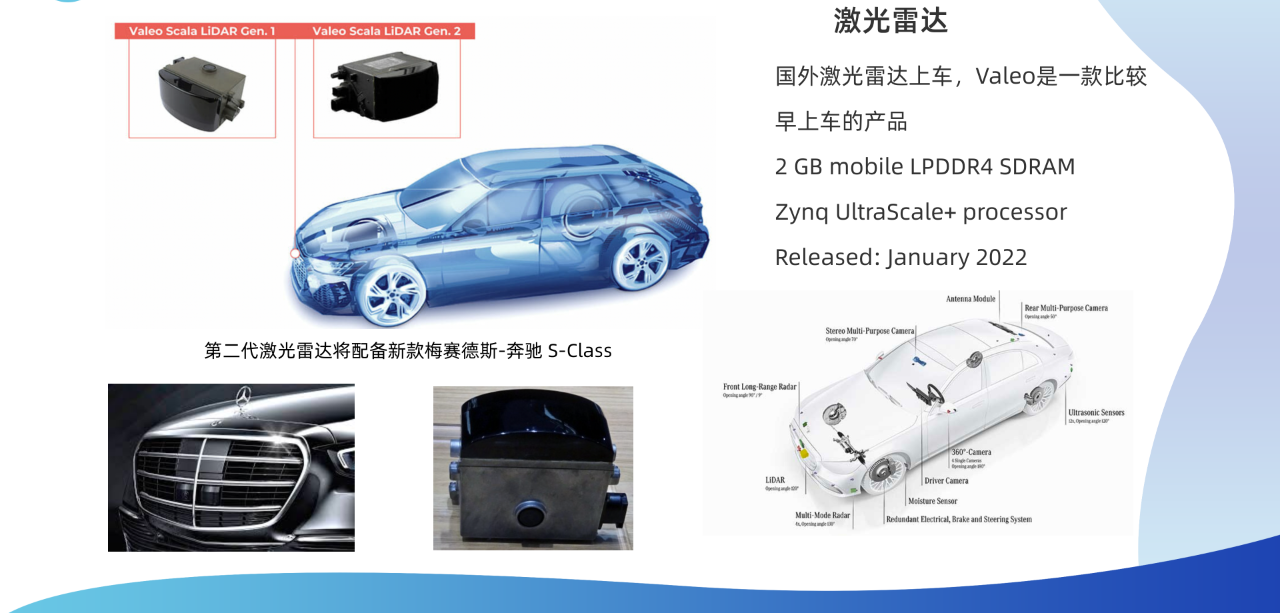Author: Zhu Yulong
We have mentioned that the laser radar companies listed on the US stock market have experienced serious diving, which is actually more common worldwide except for three Chinese companies – Hesai Photonics, Velodyne and TuSimple, and the French company Valeo has a larger share. Not only used in Audi, but also in Honda and Mercedes-Benz, Valeo’s products will supply its third-generation Scala lidar to Stellantis. This time we will mainly introduce this second-generation product. I also looked at several lidar products a while ago, and I would like to interpret some of the actual features of these products, which will be more interesting for subsequent introductions and videos.

Starting from Audi A8 in 2010, followed by Honda and Benz models, the two generations are characterized by:
-
Number of Electrical Scans: The total number of points scanned per second has increased from 58,000 to 260,800.
-
Scanning Angle Range: The vertical scanning angle has increased four times, and the angle resolution has significantly decreased from 0.8° to 0.6° thanks to the finer area grid.
-
Weight: Reduced by 60g from 625g to 565g
As we can see, the detection distance of the third generation will change, while the previous two generations were 150 meters.
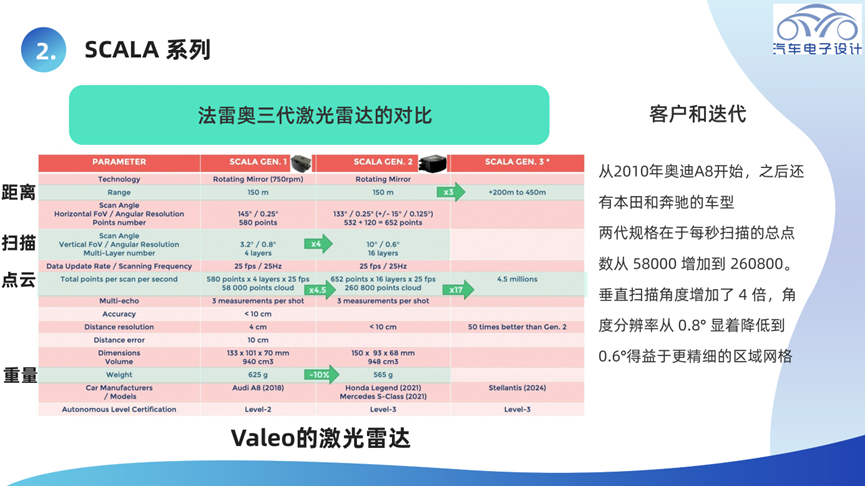
Disassembly of Lidar
The figure below shows us the main components of this system, including the motherboard, power board, conversion board, housing, mounting bracket, and optical components.# Teardown of Valeo’s LiDAR
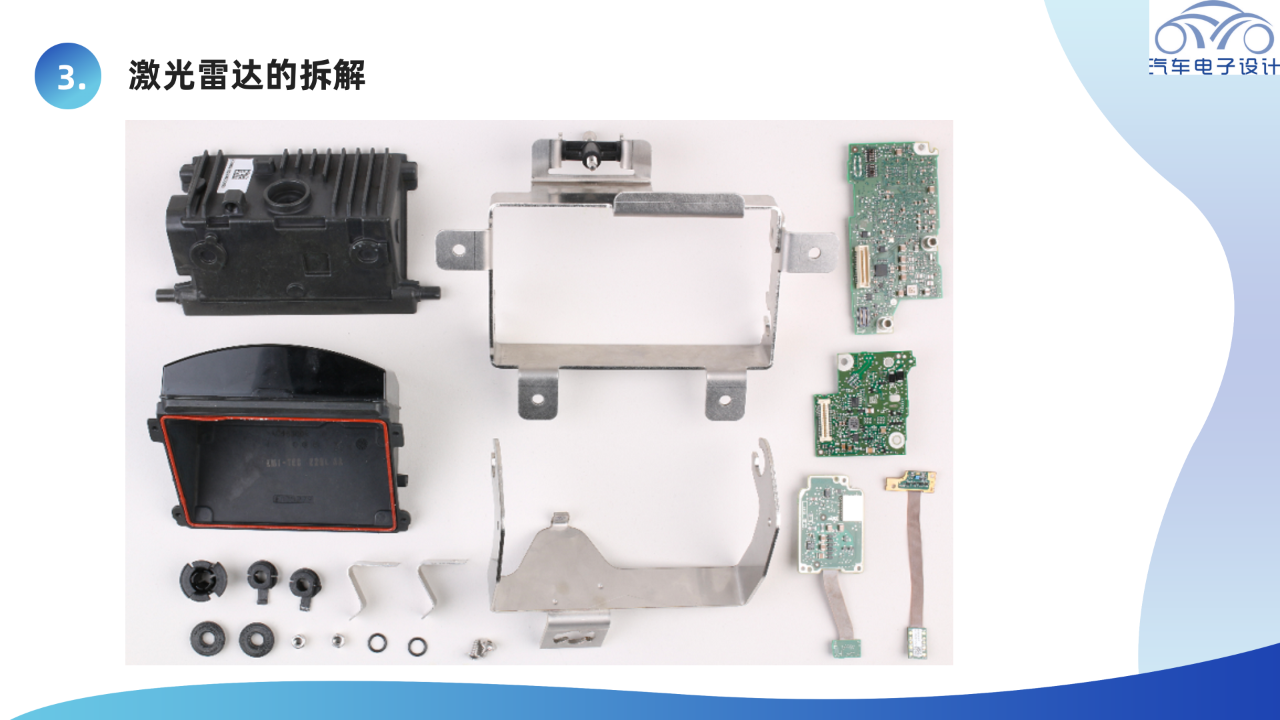
This is a breakdown of the major components and cost estimates. The estimation of the electronic chips portion is quite accurate according to the disassembly company I referenced, but the optical and other parts may be biased.
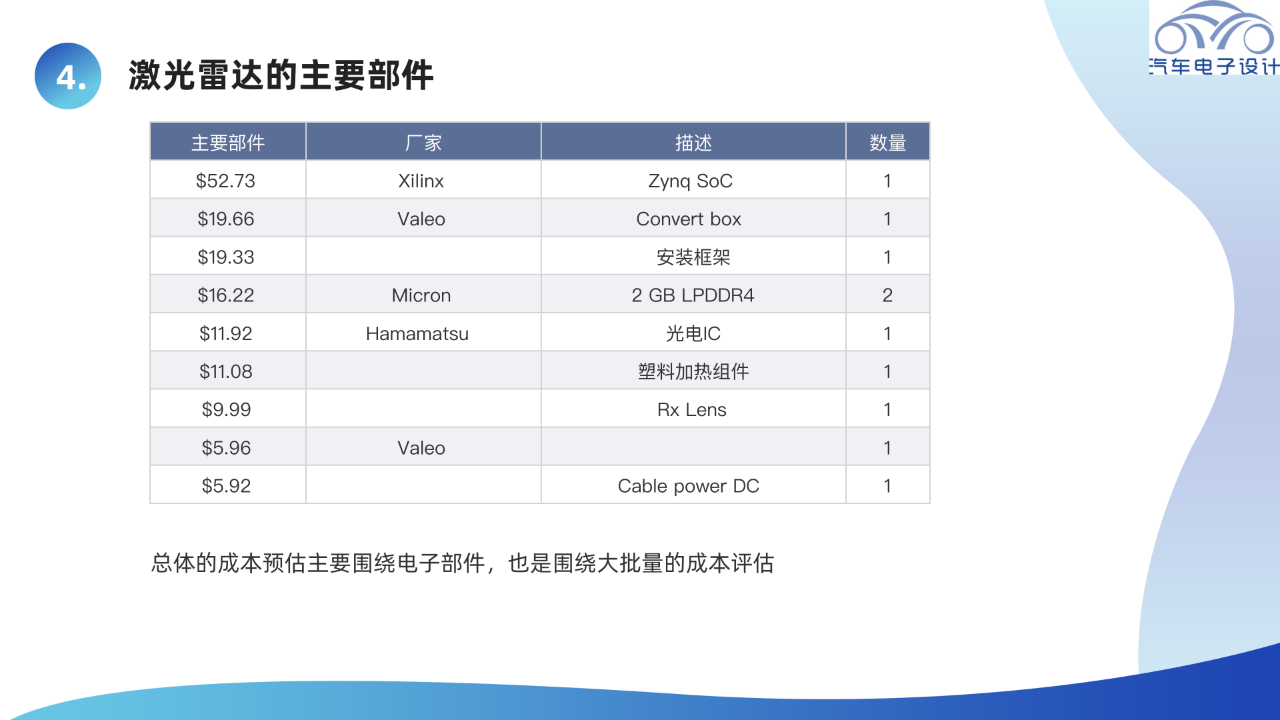
From the difference between the two generations of products, Valeo Scala Lidar Gen2 has some improvements in circuit board design, manufacturability, optoelectronic components, and housing design.
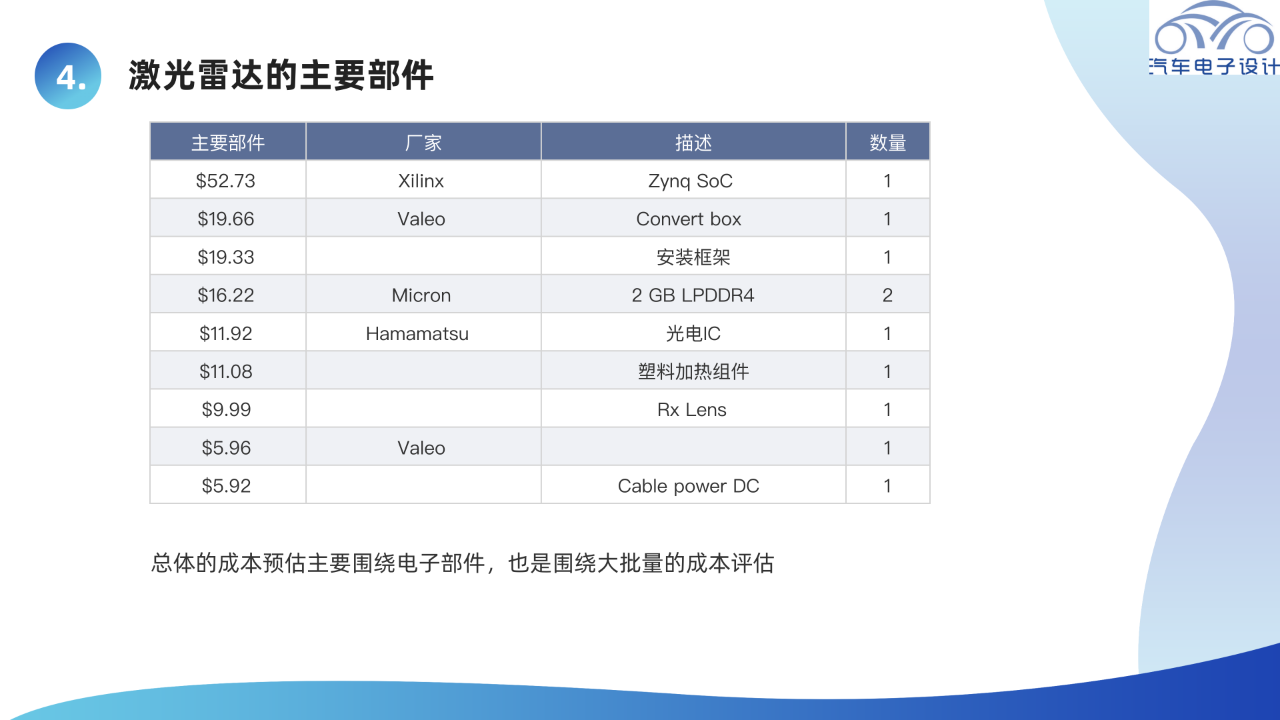
Technically speaking, the use and function of this LiDAR is still auxiliary. It is indeed due to the serious differentiation of the iterative development of LiDAR technology, with too many companies making the overall competitive environment somewhat adverse.
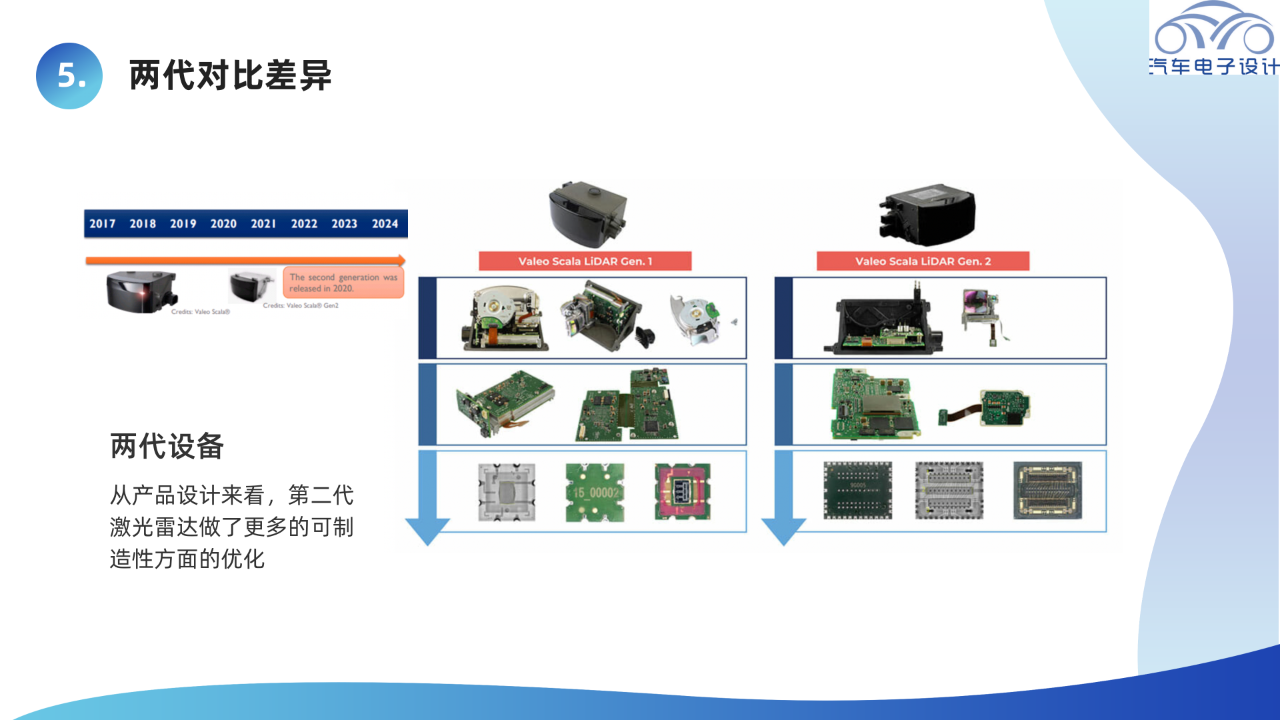
Disassembly of LiDAR
The power board includes electronic components used to power the LiDAR, including:
- Maxim’s Boost DC-DC Controller- N-channel power MOSFET from Vishay Siliconix
- Infineon’s single-channel intelligent high-side power switch
- Adjustable parallel regulator from TI
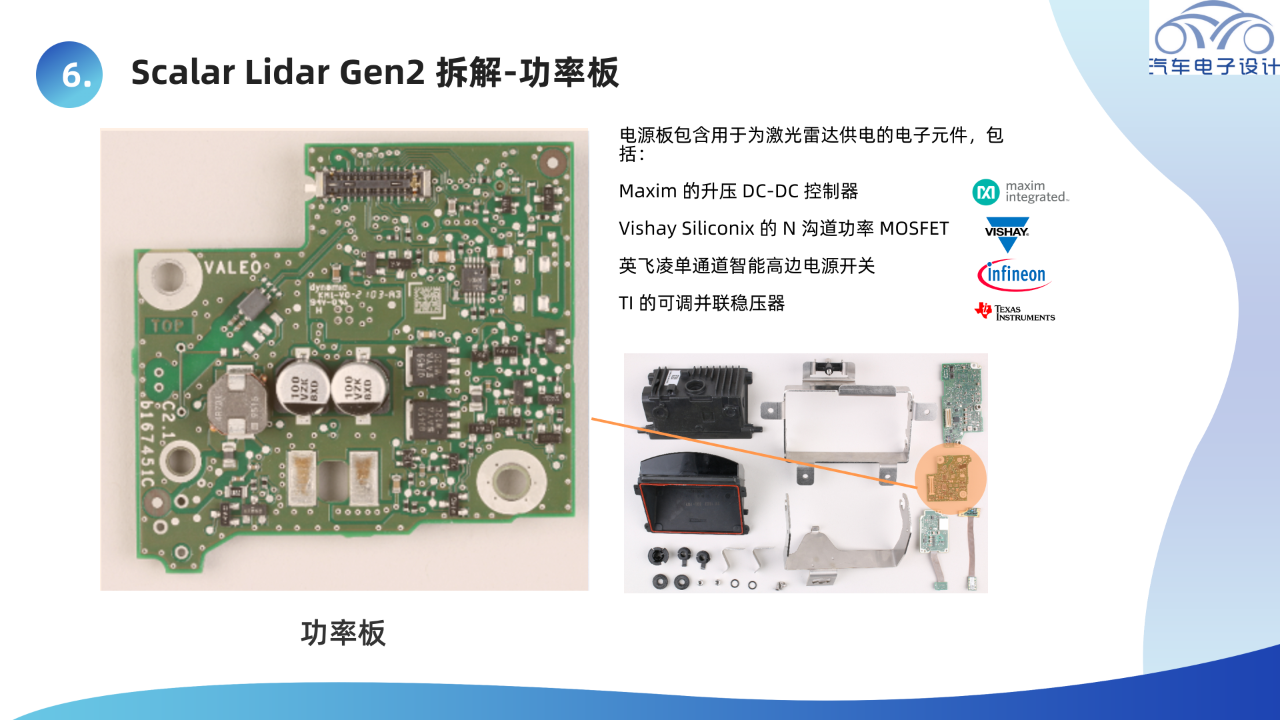
The converter board includes a communication subsystem and electronic components for communication with external ECU. The electronic components include:
- 16-bit MCU from NXP Semiconductors
- Automotive Ethernet transceiver and LIN transceiver from Broadcom
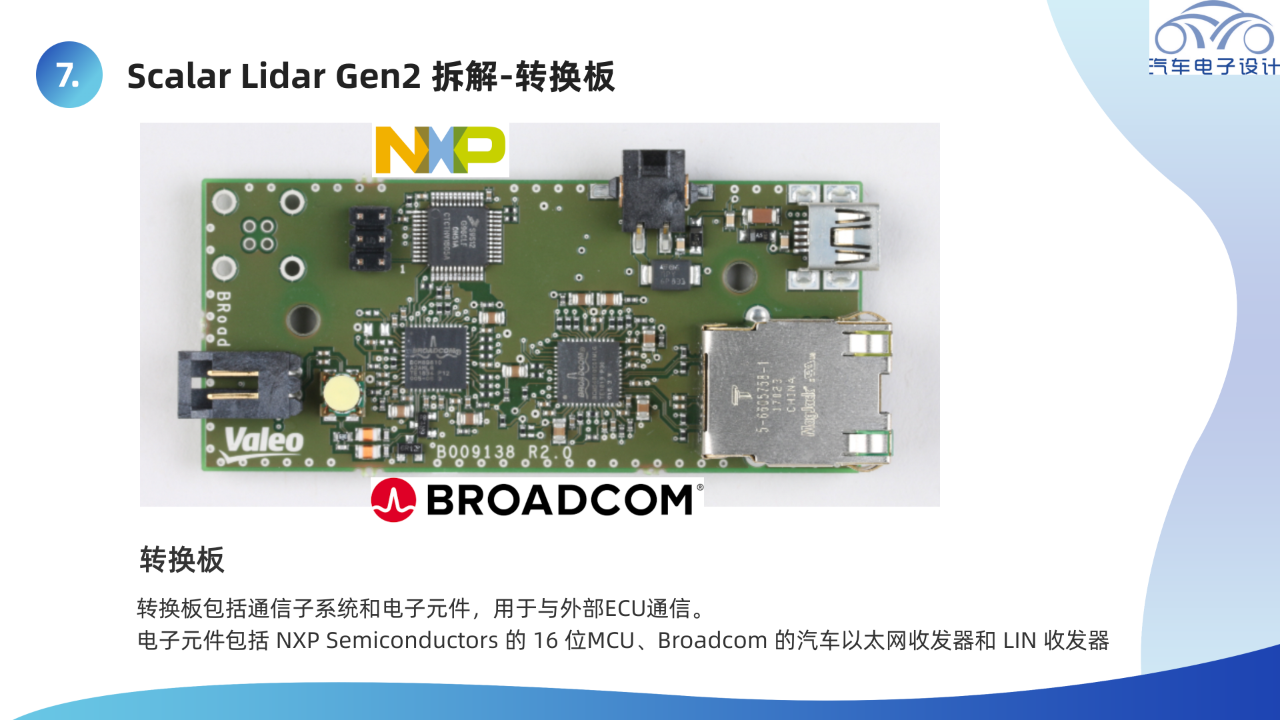
The mainboard of the Valeo Lidar system is the core of the system. The main processor and memory include:
- Zynq UltraScale+ SoC from Xilinx
- 2 GB multi-chip SDRAM memory module from Micron
- 10-bit four-channel DAC 1.25 voltage reference and boost DC-DC converter from Texas Instruments
- Power management and 6A buck DC-DC converter from Maxim
- Automotive 32-bit MCU from NXP Semiconductors
- 32 MB NOR Flash from Cypress
- Automotive Ethernet transceiver from Broadcom
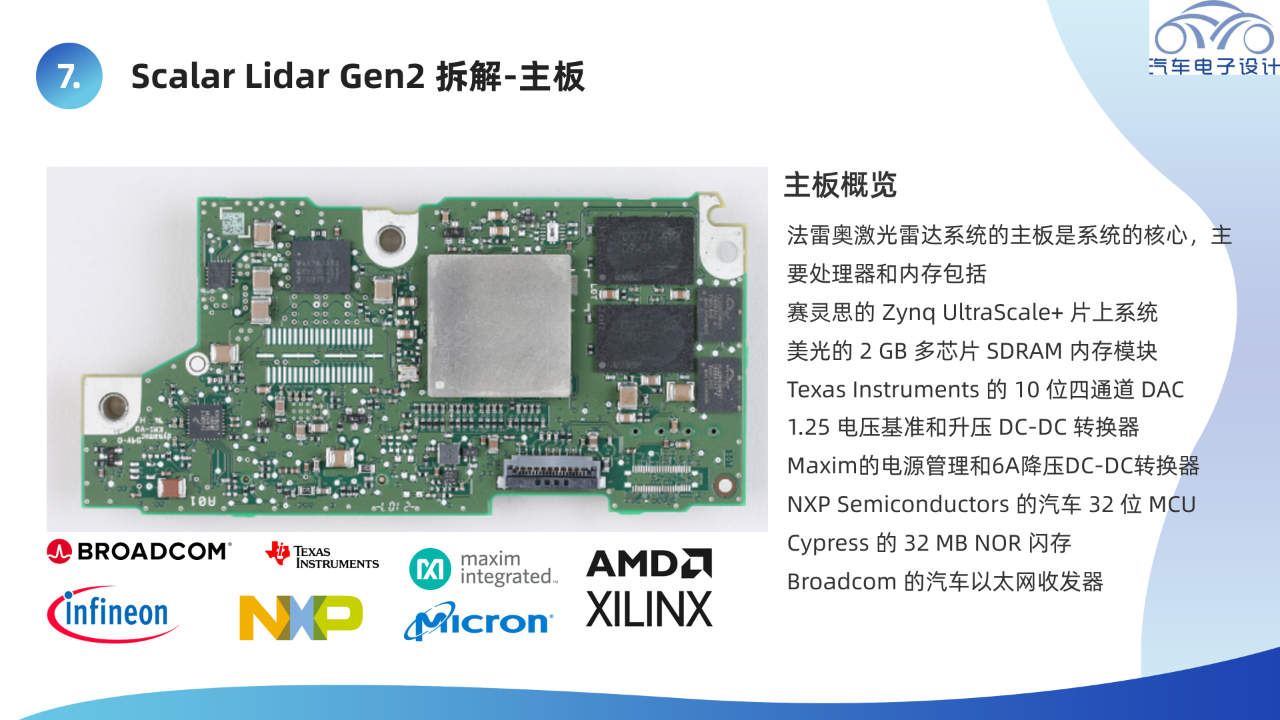
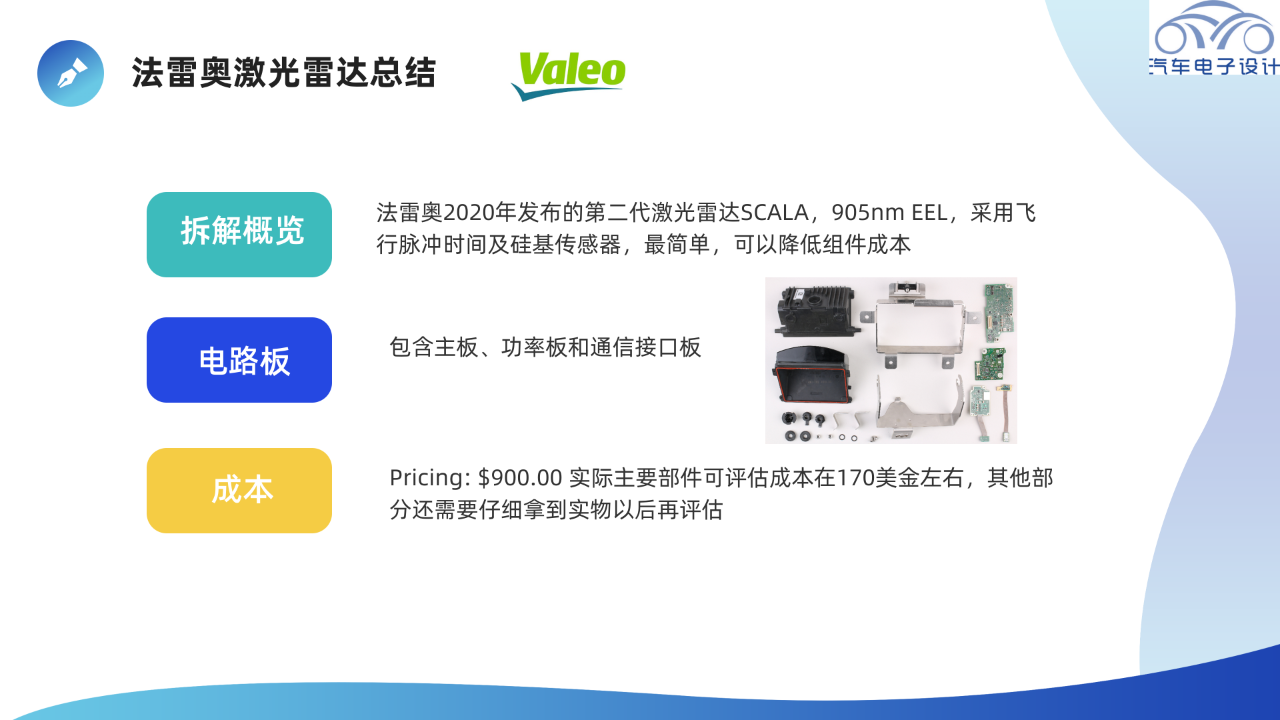
Summary: This article just scratches the surface of the story of Lidar. We will continue to explore the story of Lidar with you at a later time. As the story of L4 Robot Taxi and Truck comes to an end, Lidar can only be used in the direction of mass-produced L2+.

This article is a translation by ChatGPT of a Chinese report from 42HOW. If you have any questions about it, please email bd@42how.com.
